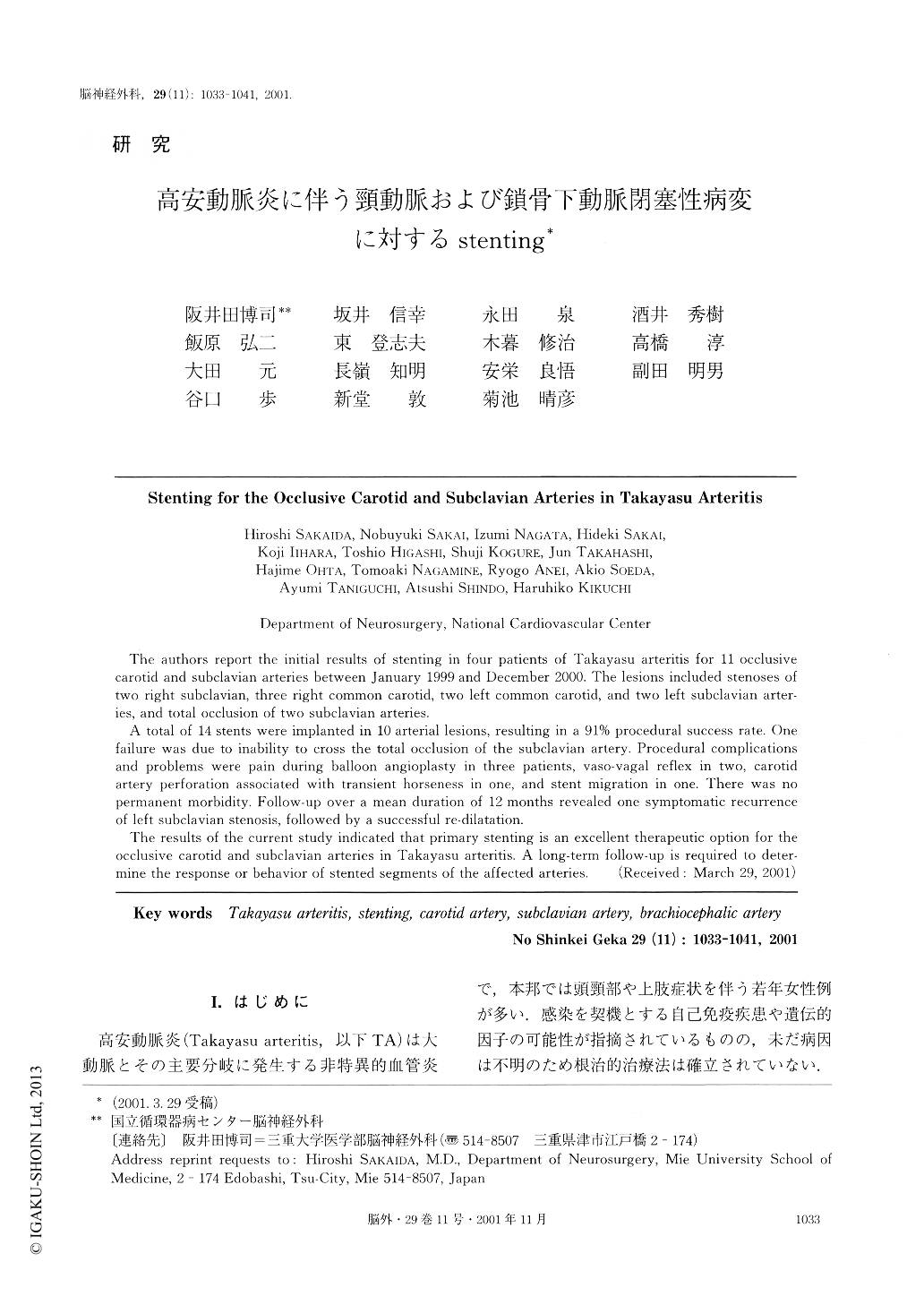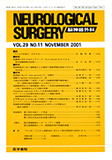Japanese
English
- 有料閲覧
- Abstract 文献概要
- 1ページ目 Look Inside
I.はじめに
高安動脈炎(Takayasu arteritis,以下TA)は大動脈とその主要分岐に発生する非特異的血管炎で,本邦では頭頸部や上肢症状を伴う若年女性例が多い.感染を契機とする自己免疫疾患や遺伝的因子の可能性が指摘されているものの,未だ病因は不明のため根治的治療法は確立されていない.画像診断の進歩に伴い早期発見・早期治療が可能となり生命予後は改善されたが,その反面,頭頸部や上肢の長期血流障害に対するより積極的な治療法が求められるようになってきた1,5,11,13,20,26).
血管内治療の発達に伴い,TAによる閉塞性病変に対し,1980年以後percutaneous transluminalangioplasty(以下PTA)が応用され始めたが,動脈硬化症以上に再狭窄が多発することが報告された3,6,7,9,16,17,21-23).この問題を改善する目的で1994年以後stentingが施行され,良好な長期成績を得られることが明らかとなってきた2,4,10,12,14,15,18,19).われわれは,動脈硬化症に伴う頭頸部動脈狭窄症および閉塞症に対する治療経験をもとに,少数例ながら本症に対してstentingを施行したので,その有用性と問題点につき文献的考察を加え報告する.
The authors report the initial results of stenting in four patients of Takayasu arteritis for 11 occlusivecarotid and subclavian arteries between January 1999 and December 2000. The lesions included stenoses oftwo right subclavian, three right common carotid, two left common carotid, and two left subclavian arter-ies, and total occlusion of two subclavian arteries.
A total of 14 stents were implanted in 10 arterial lesions, resulting in a 91% procedural success rate. Onefailure was due to inability to cross the total occlusion of the subclavian artery. Procedural complicationsand problems were pain during balloon angioplasty in three patients, vaso-vagal reflex in two, carotidartery perforation associated with transient horseness in one, and stent migration in one. There was nopermanent morbidity. Follow-up over a mean duration of 12 months revealed one symptomatic recurrenceof left subclavian stenosis, followed by a successful re-dilatation.
The results of the current study indicated that primary stenting is an excellent therapeutic option for theocclusive carotid and subclavian arteries in Takayasu arteritis. A long-term follow-up is required to deter-mine the response or behavior of stented segments of the affected arteries.

Copyright © 2001, Igaku-Shoin Ltd. All rights reserved.


